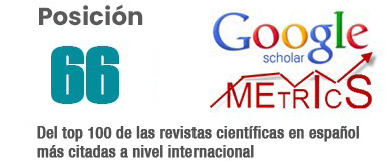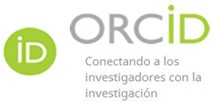yield of larvae of flies in several crops with three proportion of wheat brand and hens feaces
DOI:
https://doi.org/10.62452/vrm3g632Keywords:
Water, insects, alternative protein, organic residues, substratesAbstract
The aim of the research was to compare the yields of house fly larvae using different proportions of wheat bran and hens feces as larval development medium, in a randomized block experimental design with five replications in propylene containers with 3 cm of depth of substrates: A-100 % wheat bran; B- 50% wheat bran and 50% hens feces; C- 100% hens feces. Measurements of the temperature of the substrates, as well as the temperature and relative humidity of the place where the flies were developing were made every 24 hours. The larval yield per m2 and kg of substrate, (including the water used to moisten the larval media) were also registered. The temperature in the substrates ranged between 22.88 oC and 36.08 oC, always above the ambient temperature in the fly house, and relative humidity between 44 and 68%. Was used 32.91, 30.29 and 32.19 L of water per square meter for treatments A, B and C, respectively. The highest larval yield was obtained in the first harvest after six days for treatment B with 2290.59 g m2-1 y 112.07 g kg2-1. The transformation of the crude protein of the substrates by the fly larvae was between 28.0 and 37.0%. No presence of pathogenic agents (Salmonella spp., Escherichia coli, and Coccidia) was observed in the treatments, nor in the harvested larvae.
Downloads
References
Argentina. Comisión Nacional de Sanidad Avícola. (2018). Guía de buenas prácticas: Control de plagas en establecimientos avícolas. http://WWW.senasa.gob.ar/sites/defaut/files/ARBOL_SENASA/ANIMAL/AVES/PROD_PRIMARIA/SANIDAD_ANIMAL/MANUALES/2018/manual_plagas.pdf
Association of Official Analytical Chemists. (2005). Animal Feed AOAC / Official Methods of AOAC International. https://law.resource.org/pub/us/cfr/ibr/002/aoac.methods.1.1990.pdf
Barnard, D., & Geden, C. (1993). Influence of larval density and temperature en poultry manure on development of the house fly (Diptera: Muscidae). Environmental Entomology, (22)5, 971-977.
Beniers, J., & Graham, J. (2019). Effect of protein and carbohydrate feed concentrations on the growth and composition of black soldier fly (Hermetia illucens) larvae. Journal of Insects as Food and Feed, 5(3), 193 – 199.
Beskin, K., Holcomd, C., CammacK, J., Crippen, T., Knap, A., Sweet, S., & Tomberlin, J. (2018). Larval digestion of different manure types by the black soldier fly (Diptera: Stratiomyidae) impacts associate volatile emissions. Waste Management, 74, 213-220.
Casanovas, E., Perales, D., Suárez, A., Medina, D., & Hernández, R. (2020). Producción de larvas de mosca doméstica Musca domestica L. en diferentes sustratos. International Journal of Innovation and Scientific Research, 51(1), 1-8.
Casanovas, E., Suárez del Villar, A., Álvarez, A., & Reyes, R. (2021). Rendimiento de larvas de moscas (Musca domestica L.) con diferentes proporciones de germen de maíz y heces fecales porcinas. Revista Científica Agroecosistemas, 9(2), 13-18.
Cheng, Z., Yu, L., Li, H., Xu, X., & Yang, Z. (2021). Use of housefly (Musca domestica L.) larvae o bioconversion food waster for animal nutrition and organic fertilizer. Environment Science. Pollution, 28, 48921- 48928.
Cicková, H, Newton, G., Lacy, R., & Kozánek, M. (2015). The use of fly larvae for organic waste treatment. Waste Management, 35, 68-80.
Cruz, S., Chim, M., LOebmann, D., Reis J., & García, A. (2002). Influência da Temperatura e do Tipo de Substrato na Produção de Larvas de Musca domestica Linnaeus, 1758 (Diptera, Muscidae). Revista Brasileira Zootecnia, 31(5),1886-1889.
Feldmeyer, B., Kozielska, M., B, K., F, W., Beukeboom, L., & Pen, I. (2008). Climatic variation and the geographical distribution of sex-determining mechanisms in the houses fly. Evolutionary Ecology Research, 10(6), 797-809.
Florez, M., Berkebile, D., Brewer, G., & Taylor D. (2019). Effects of temperature and diet in stable fly (Diptera: Muscidae) development. Insects, 10(207), 2-13 .
Foley J.A., Ramankutty N., Brauman K.A., Cassidy E.S., Gerber J.S., Johnston M., Mueller N.D., O’Connell C., Ray D.K., & West P.C. (2011). Solutions for a cultivated planet. Nature, 478: 337-342.
Gadzama I. U., & Ndudim R. K. (2019).Nutritional Composition of Housefly Larvae Meal: A Sustainable Protein Source for Animal Production – A Review . Acta Scientific Agriculture 3 (4), 74-77.
Gafar, A., Sankara, F., Pousga, S., Coulibaly, K., Nacoulma, J., Ouedraogo, I., Nacro, S., Kenis, M., Sanon, A., & Somda, I. (2019). Production de masse de larves de Musca domestica L. (Diptera: Muscidae) pour l’aviculture au Burkina Faso: Analyse des facteurs déterminants en oviposition naturelle. Journal of Applied Biosciences, 134.
Hussein, M., Pillai, V., Goddard, J., Park, H., Kothapalli, K., Ross, D., Ketterings, Q., Brenna, J., Milstein, M., & Marquis, H. (2017). Sustainable production of housefly (Musca domestica) larvae as a protein-rich feed ingredient by utilizing cattle manure. Plos One, 12(2) , 1-19.
Instituto de Meteorología de Cienfuegos. (2021). Datos meteorológicos mes de octubre 2021. En formato digital. INSMET.
Koné, N., Sylla, M., Nacambo, S., & Kenis, M. (2017). Production of house fly larvae for animal feed through natural oviposition. Journal of Insects as Food and Feed, 3(3), 177-186
Lähteenmäki-Uutela, A., Marimuthu, S., & Meijer, N. (2021). Regulations on insects as food and feed: a global comparison. Journal of Insects as Food and Feed, 7(5), 849-856.
Makkar, H., Tran, G., Heuzé, V., & Ankers, P. (2014). State of the art on use of insects as animal feed. Animal Feed Science and Technology, 197, 1-33
Martínez, A., Arriola, L., & Sahagún, A. (2015). Inhibición de la formación de pupas de Musca domestica L. por Beauveria bassiana (Balsamo) Vuillemin nativa del estado de Guanajuato. Jóvenes en la Ciencia, 1,(2), 29-32.
Miranda, C., Cammack, J., & Tomberlin, J. (2020). Life-history traits of house fly, Musca domestica L. (Diptera: Muscidae), reared on thee manure types. Journal of insects as Food and Feed, 6(1), 81-90.
Ossey, Y., Koumi, A., Koffi, K., Atse, B., & Kouame, L. (2012). Use of soybean, bovine brain and maggot as sources of dietary protein in larval Heterobranchus longifilis (Valenciennes, 1840). Journal of Animal and Plant Sciences, 15(1), 2099-2108.
Pastor, B., Velasquez, Y., Gobbi, P., & Rojo, S. (2015). Conversion of organic wastes into fly larval biomass: bottlenecks and challenges. Journal of Insects as Food and Feed, 1(3), 179-193.
Pieterse, E., & Pretorius, Q. (2013). Nutritional evaluation of dried larvae and pupae meal of the housefly (Musca domestica) using chemical-and broiler-based biological assays. Animal Production Science (54), 347-355.
Pino, M. (2018). Por qué todavía no comemos insectos: marco legal en la Unión Europea. Revista de Bioética y Derecho, (42), 311-341.
PROteINSECT. (2016). Insects as Sustainable Sources of Protein. https://www.proteinsect.eu/fileadmin/user_upload/press/proteinsect-whitepaper-2016-final.pdf
Rubio, B. (2015). Crisis de hegemonía y transición capitalista en el ámbito agroalimentario mundial. Espacio abierto, 24(2), 235-254.
Sanou, A., Sankara, F., Pousga, S., Coulibaly, K., Nacoulma, J., Ouedraogo, I., Nacro, S., Kenis, M., Sanon, A., & Sonda, I. (2019). Production de masse de larves de Musca domestica L. (Diptera: Muscidae) pour l’aviculture au Burkina Faso: Analyse des facteurs déterminants en oviposition naturelle. Journal of Applied Biosciences, 134, 13689 – 13701.
Sequeira, R., Millar, L., & Bartels, D. (2001). Identification of Susceptible Areas for the Establishment of Anastrepha spp. Fruit Flies in the United States and Analysis of Selected Pathways. Raleigh. NC USDA-APHISPPQ Center Plant Health Science Technology, (47), 21,1-47.
Van Huis, A. (2015). Edible insects contributing to food security? Agriculture and Food Security, 4(20), 2-9.
Wang, H., Zhang, Z., Czapar, G., Winkler, M., & Zheng, J. (2013). A full-scale house fly (Diptera: Muscidae) larvae bioconversion system for value-added swine manure reduction. Waste Management and Research, 31(2), 223-231.
Downloads
Published
Issue
Section
License
Copyright (c) 2024 Enrique Casanovas-Cosío, Reina Reyna-Reyes, Nelson Valladares-Enriquez, Alexis Suárez del Villar-Labastida, Ana Álvarez-Sánchez (Autor/a)

This work is licensed under a Creative Commons Attribution-NonCommercial-ShareAlike 4.0 International License.
Authors who publish in Revista Metropolitana de Ciencias Aplicadas (REMCA), agree to the following terms:
1. Copyright
Authors retain unrestricted copyright to their work. Authors grant the journal the right of first publication. To this end, they assign the journal non-exclusive exploitation rights (reproduction, distribution, public communication, and transformation). Authors may enter into additional agreements for the non-exclusive distribution of the version of the work published in the journal, provided that acknowledgment of its initial publication in this journal is given.
© The authors.
2. License
The articles are published in the journal under the Creative Commons Attribution-NonCommercial-ShareAlike 4.0 International License (CC BY-NC-SA 4.0). The terms can be found at: https://creativecommons.org/licenses/by-nc-sa/4.0/deed.en
This license allows:
- Sharing: Copying and redistributing the material in any medium or format.
- Adapting: Remixing, transforming, and building upon the material.
Under the following terms:
- Attribution: You must give appropriate credit, provide a link to the license, and indicate if any changes were made. You may do this in any reasonable manner, but not in any way that suggests the licensor endorses or sponsors your use.
- NonCommercial: You may not use the material for commercial purposes.
- ShareAlike: If you remix, transform, or build upon the material, you must distribute your creation under the same license as the original work.
There are no additional restrictions. You may not apply legal terms or technological measures that legally restrict others from doing anything the license permits.




